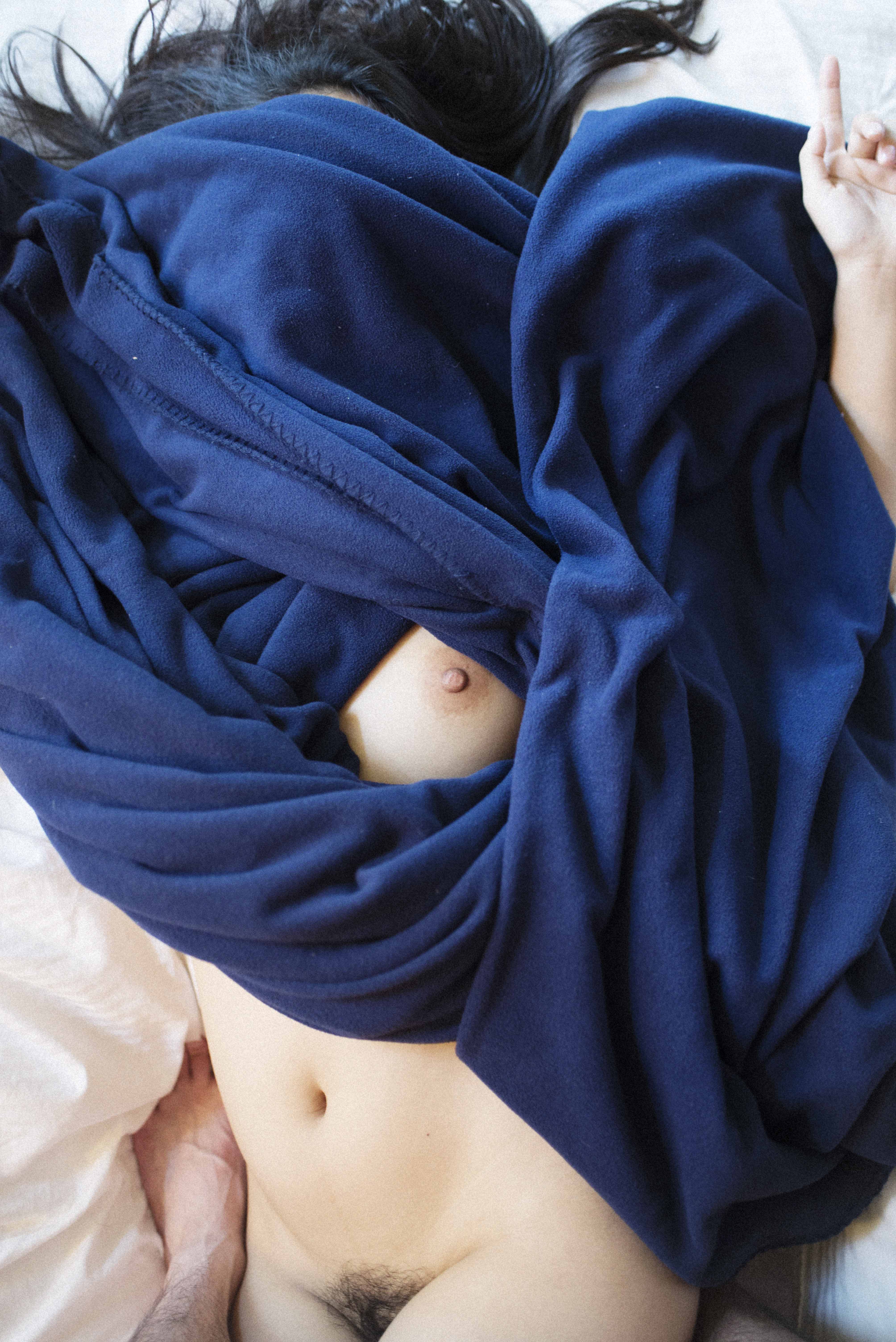


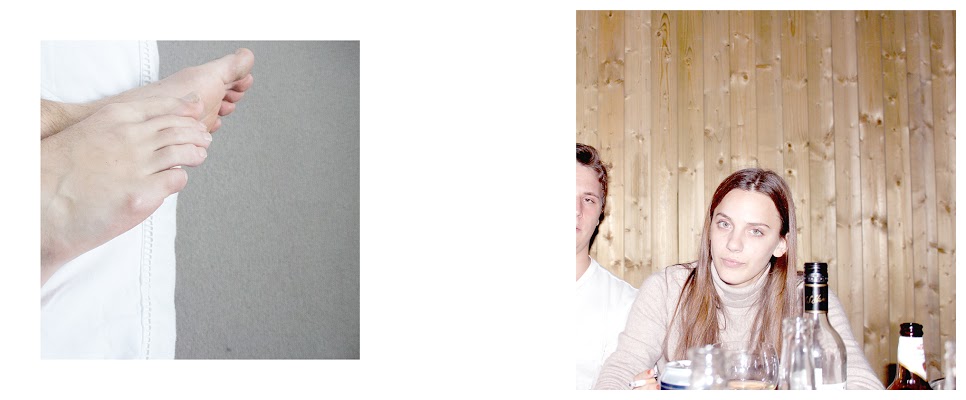
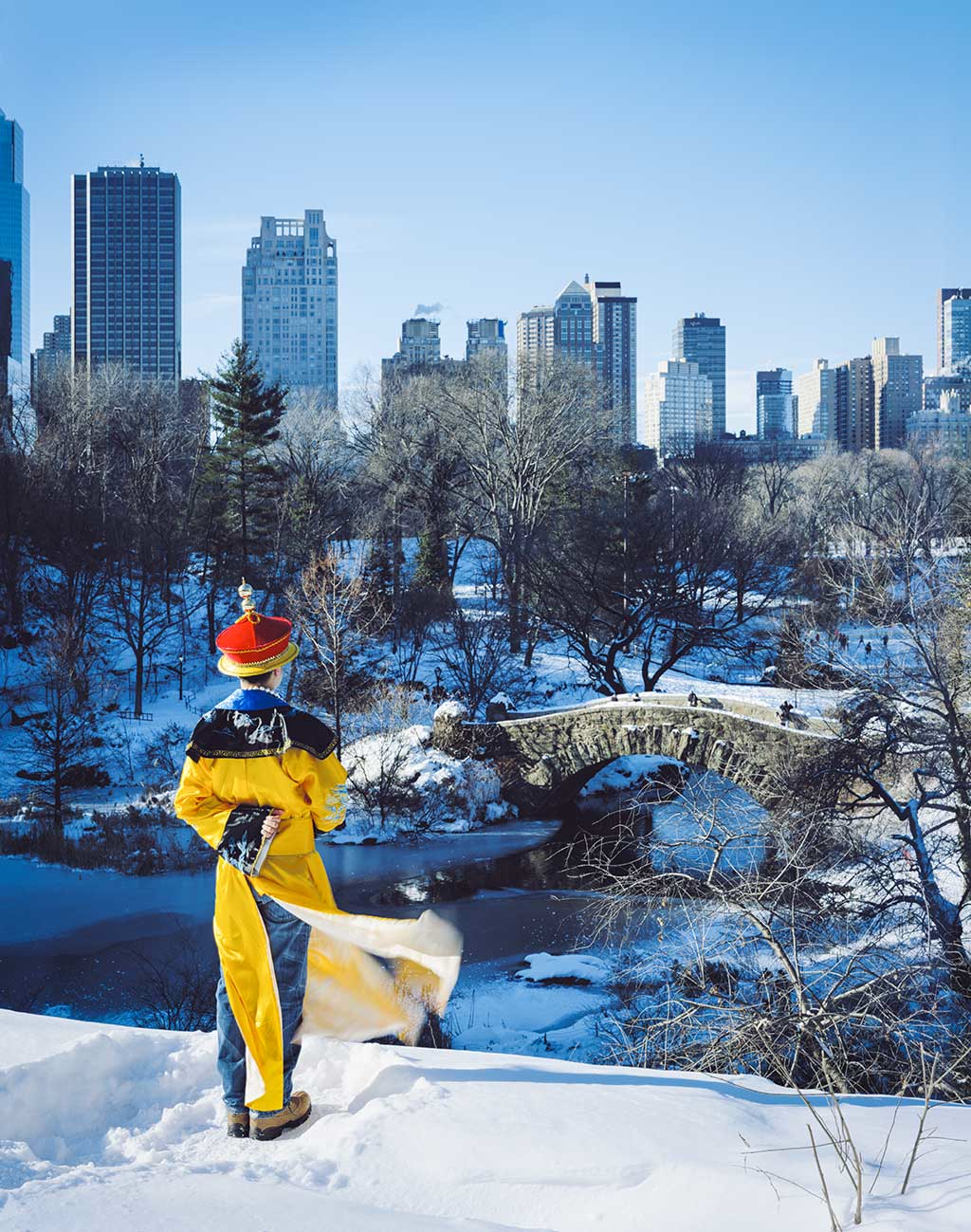
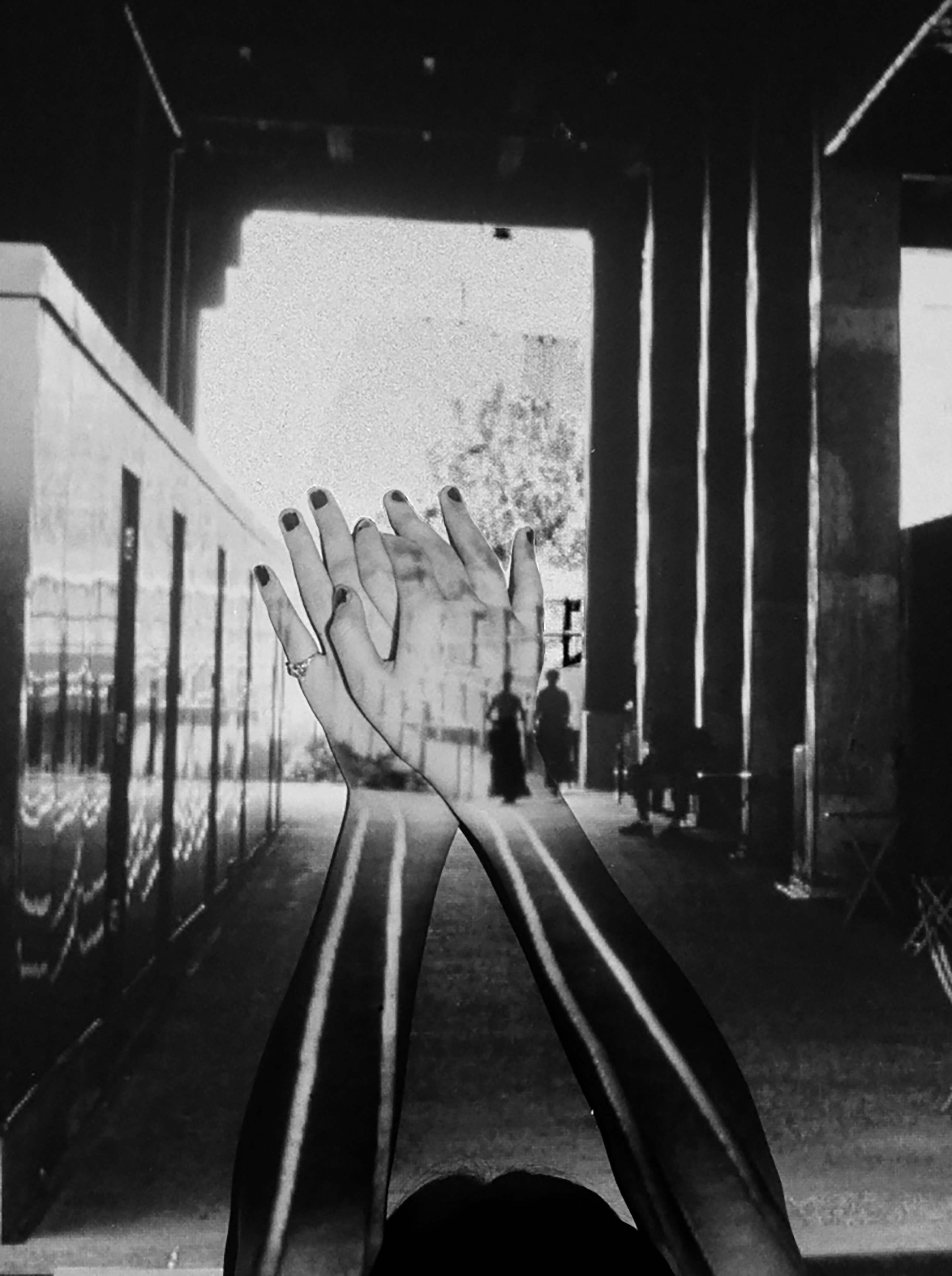
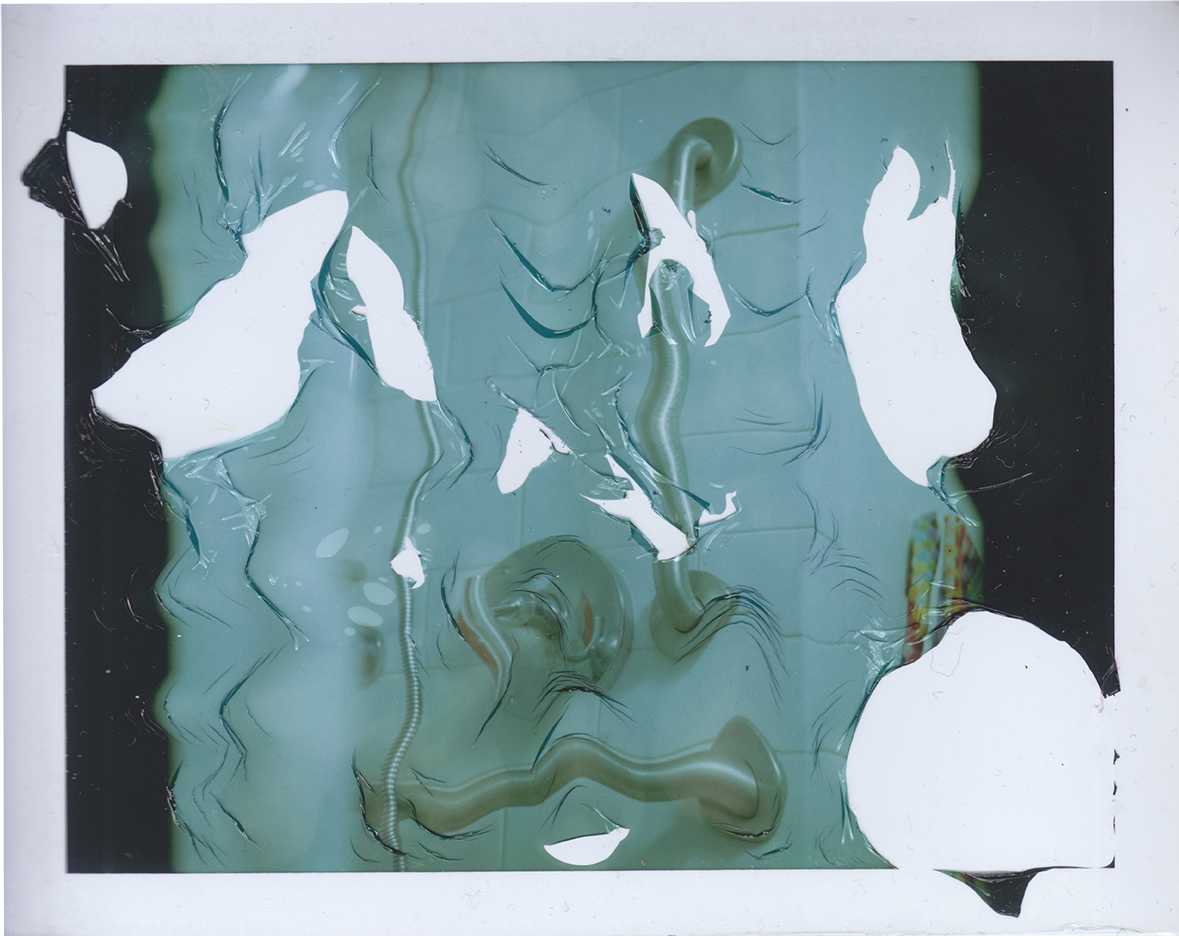

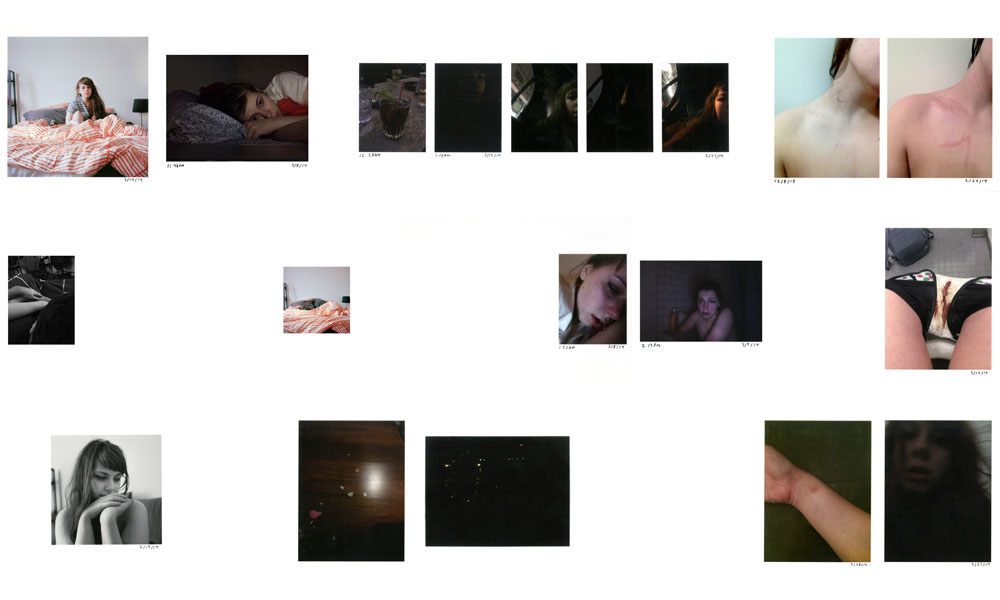


We asked each exhibitor to provide us with the answer to the question: How does your work confront the questions of truth versus fiction? Their answers below:
Exhibitor List (in oder of work shown):
Alex Kwok
I am fascinated by how photography romanticizes human relationships and its control, or perhaps its lack of, in representing truthfulness. This series plays with the authenticity of relationships between two individuals and the roles they consciously, and especially subconsciously, take upon that is otherwise indescribable without the photographic medium. These photographs presents an alternative reality where an intimate couple is isolated within their haven, but in fact, they are simply two strangers who invest an incredible amount of trust in one another, and are willing to be emotionally and physically vulnerable and exposed to another human being.
Alison Vania – Lady Alchemy
“Lady Alchemy” is a body of work that depicts this woman as an object of desire as she uses make-up and wardrobe to accentuate her appearance. Her career is based on her image and is dependent on creating an illusion of reality. In the Image the woman is posing on an elevated stage with one leg planted a step, accentuating her figure and creating a silhouette behind her that exudes sex. This image creates a juxtaposition of reality (the woman) and the perception of reality (the shadow).
Nicholai Kellman – untitled from ‘Parts Identity’
This images portrays the human form as it is without being manipulated but is seen differently due to the way light is being used. When removing the head of the figure, the form is altered changing the perception of what the true image may look like. This leads to question, is this image a true form being portrayed or an object being altered. My view on the subject is portraying true forms outside of their pre-perceived nature. A body without an identity can stand alone as a new form.
Phoebe Weinstein – diptych from ‘Finding Utopia’
This diptych is part of my series called, ‘Finding Utopia’. I titled it this as that is the best why in which I could describe my mind set. I am vocalizing the dream like state of mind that I have found myself in as an 18 year old growing up in a city (London). I do not think that these feelings of drowning, excitement and pressure are unusual to anyone that is about to experience ‘the real world’. I want this series of images to bring a light and comedic atmosphere to these feelings. I wanted ‘Finding Utopia’ to display both my dream world and the world of reality.
Qiren Hu – The Emperor Arrives
The Emperor Arrives series explores the Chinese Imperial dynasty’s legacy in the 21st century. Focusing on the theme of the masquerade, the series attempts a direct commentary of the Chinese society on the backdrop of Beijing’s increasing economic might, while providing a provocative and ironic study of shifting stereotypes that emphasizes on the borderline between reality and fantasy.
Set in the context of the American landscape, the images evoke a reference to Chinese ink paintings at first sight. However, finely calibrated multiple deceptions and the casual revelation of those deceptions serve a reminder that this is a staged photograph. The emperor’s contemplative and impassive gaze outside the pictorial space suggests the real world that exists beyond the boundaries of the frame. High rise buildings and contemporary activities act as a conduit between inside and outside, between fictive and real space. The appropriated alter ego thus becomes the quintessential outsider that transforms every photographic occasion into a seriocomic ritual of cultural diplomacy.
Vita Brown
In this series of photos I chose images that have resonance to me, project it onto a wall and then re-photograph myself interacting with said projection. It’s my way of delving into the correlation between the past and the present and the feelings one associates with memories; how it’s possible to manipulate the past, twist events and remember things completely differently to how they actually happened.
Vix Walker – Untitled Polaroid
I’m interested in Polaroid manipulation because Polaroids are thought to be incapable of alteration; I liked the juxtaposition of a fictitious image on a medium which normally signifies truth.
Zeta Gao – the floating journey
I’m a big fan of classical music and my favorite composers are Rachmaninoff and Stravinsky. Their work are very sentimental, but at the same time, very noble and classy. This is where I got my inspiration from. I like contradictory things and I believe that as a photographer, to embody the duality of either a model or an image can be a very difficult task. I’m now on my way.
My work “the floating journey” depicts a fairy tale that the Princess Mononoke lost gravity and later she had a wonderful journey floating in the other world. The world we couldn’t see but exists in our mind. I define this series of photographs as surreal fashion narratives.
Cassidy Paul – This is My Goodbye
This work confronts the idea of truth within photography by denying the viewer any contextual information: any opinion or understanding of the events or narrative must come solely from time stamps and the visual content. This lack of information opens up possibilities for multiple interpretations, breaking the idea that a photograph tells a singular ‘truth’.
Elizabeth Harnarine – Inner Demons
On the outside I look normal, but, at this moment, my body is destroying itself.
Until a cure is discovered, Crohn’s Disease will have an enormous impact on the way I live my life. My doctors frequently use multiple methods of recording the damage the disease is causing to my digestive system. These costly and uncomfortable procedures often result in oddly beautiful images of a painful and oppressive disease.
Martim Passos – Caraíva, BA – Brazil
My photograph plays with dimension and scale. Although it looks like a canyon or a massive waterfall, it’s only a regular-sized rock on the beach. It demonstrates how nature can mislead our perception of the world, repeating shapes in different scales, and how photography can emphasise such tricks through the use of perspective and close ups.
Isabella Alesci
Ryan Duffin
Mark Fitton
Ashley Middleton
Masahito Ono
Kalman Pool
Gunner Strietzel
PHOTOFEAST Curators:
Tina Keon
Kevin Aranibar Molina
Megan Paetzhold
John Ralston
Victoria Rickson
Monica Terrero
Hallie Turner
Troy Wong
